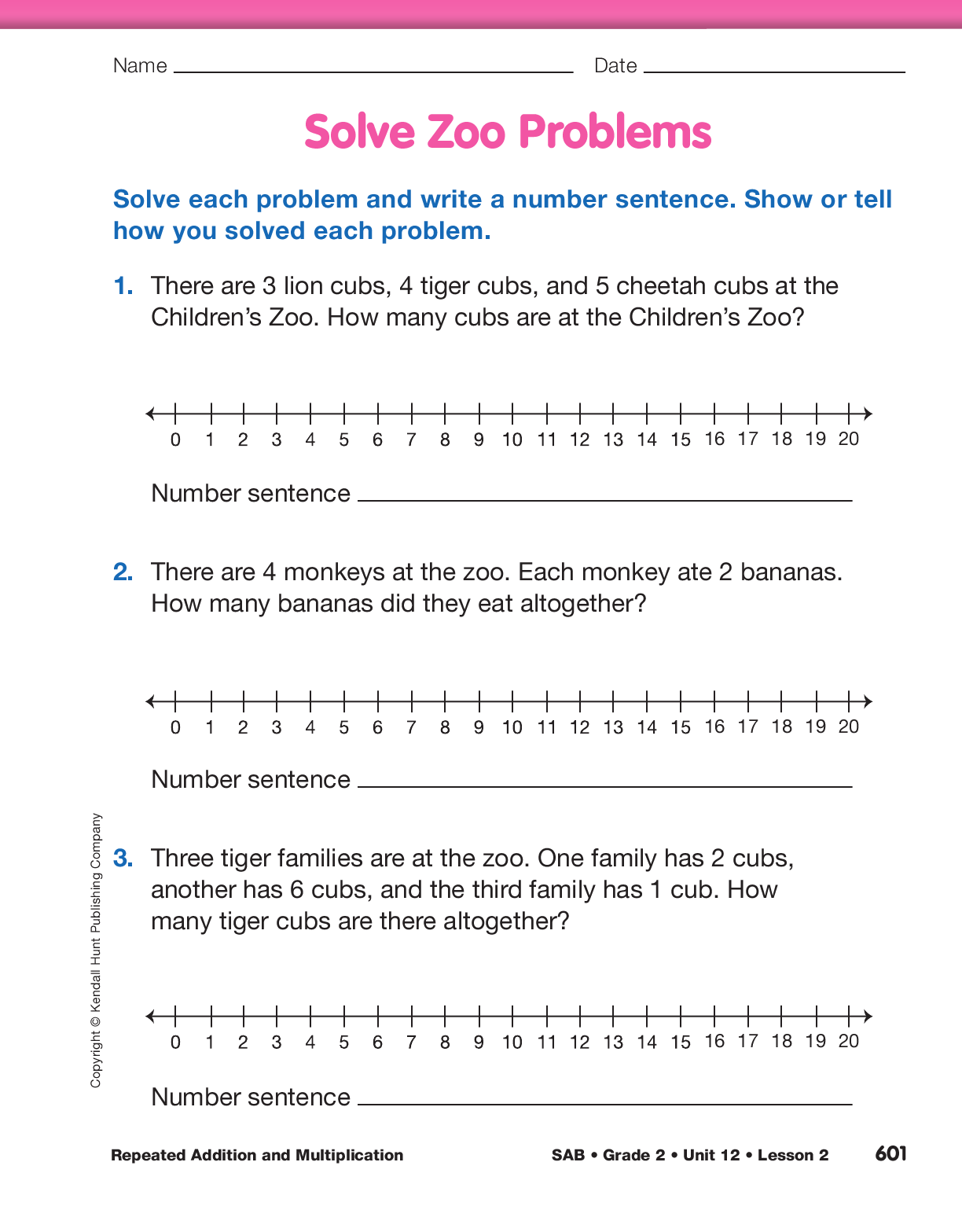Upon completion of the Know the Problem pages ask:
- Compare your answers with your partner’s answers. How did you know whether to add or multiply?
- If it was a multiplication problem, what strategies did you use to solve the problem?
- Did you and your partner use different strategies?
- Was one strategy easier to use than the others on the Repeated Addition Strategies chart? Why?
Use a display of the Know the Problem pages to have several students share their strategies for solving the problems.
As they share their strategies, ask:
- What is the question?
- What labels show what the numbers mean?
- What strategies did you use to solve the problem?
- Does your answer make sense? How do you know?
- How do you know when to add the numbers and when to multiply or use repeated addition?
(Possible response: When you have different amounts in each group, you add to find the total.
When you have equal groups, you can use repeated addition or multiplication.)
Assign the Solve Zoo Problems pages in the Student Activity Book to assess students’ abilities to solve
multiplication problems. Have connecting cubes or other counters, number lines, and the Math Practices
page in the Reference section readily available.
Use the Solve Zoo Problems pages and the Feedback Box in
the Student Activity Book to assess students’ abilities to
represent multiplication problems using tiles, drawings,
number lines, rectangular arrays, and number sentences
[E2]; make connections between repeated addition and
multiplication [E3]; distinguish between addition and
multiplication situations [E5]; solve multiplication problems
using strategies (e.g., skip counting, repeated addition) with
tiles, drawings, number lines, rectangular arrays, and
number sentences [E7]; know what is important to solve a
problem [MPE1]; find an efficient strategy [MPE2]; show or
tell how to solve a problem [MPE5]; and use labels to show
what numbers mean [MPE6].















